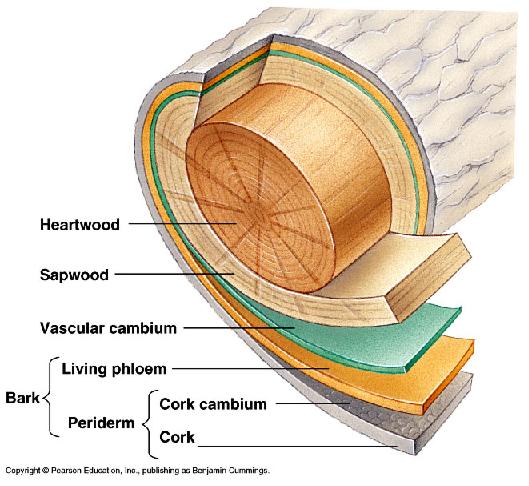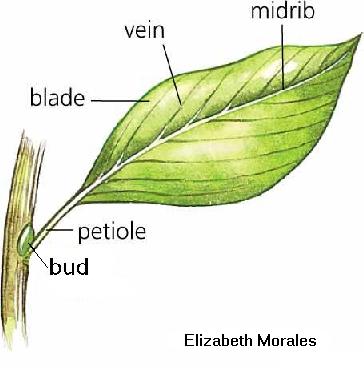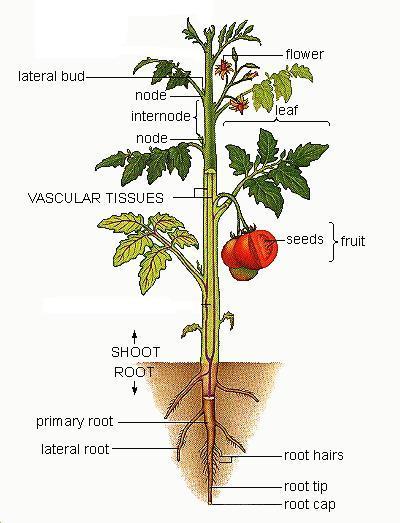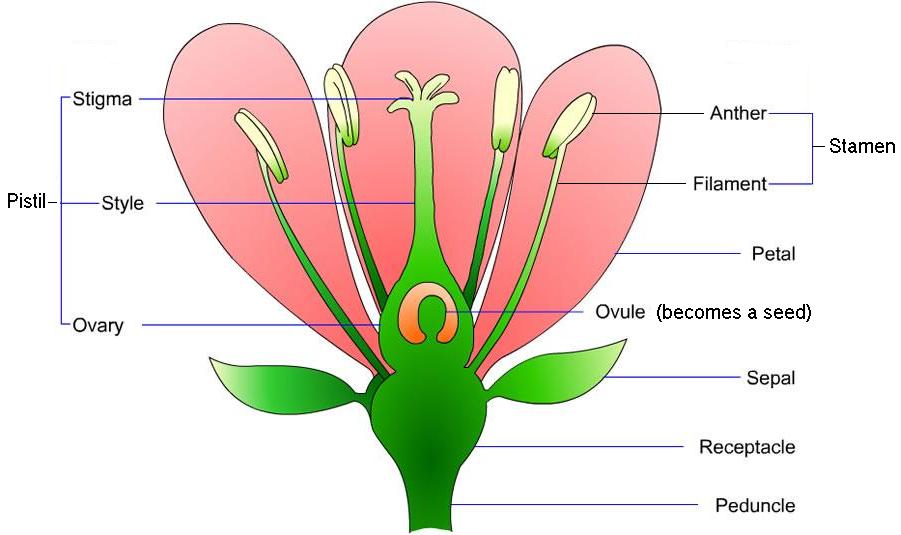 [S]
[S]
GLOSSARY OF PLANT TERMS
by Grandpa Cliff Oct 20, 2005
This webpage is not a true glossary. It usually gives descriptions or explanations instead of technical definitions, and the terms are not arranged alphabetically. They are grouped together so that similar terms can be compared with each other. You can scan down the page or use Edit/Find to look for a word on this webpage. Many plant terms are described on this website in a webpage that discusses that subject.
---------------------------------------------------------------------------------------
ORGANISM - an individual of any kind of living thing
SCIENTIFIC NAME - all living things have a name that has two parts, both of which are usually Latin words
Genus - the first part of the scientific name. It is always capitalized, and it applies to a group of similar species.
Maples are a group of similar species. Acer is the genus of all Maples.
Species - the second part of the scientific name. The species always begins with a small letter unless it is a
proper name, in which case it must be capitalized. The species name for Red Maple is rubrum.
[The scientific name for Red Maple is Acer rubrum. For man it is Homo sapiens. For the cat it is Felis domesticus.]
BIOLOGY - the study of all living things [Biological is the adjective form of this word.]
BOTANY - the study of plants [Botanical is the adjective form of this word.]
ORNAMENTAL PLANT - a plant grown in parks and around homes for its beauty or as a landscape plant.
KINDS OF PLANTS
Woody - have hard stems made of wood (xylem, ZIGH-lem). The stems grow for more than one year.
Herbaceous (her-BAY-shus) - have soft stems that usually die in Northern U.S. by the time Winter arrives or
shortly after that
LIFE SPAN OF A PLANT
Annual - lives one growing season. It must produce seeds so that future plants of that kind can grow.
Biennial - lives two growing seasons. The first year it stores food. The second year it produces the flowers and
seeds.
Perennial - lives and grows for more than two years (like trees). Once it matures, it may produce flowers and
seeds yearly.
TYPES OF WOODY PLANTS
Evergreen - keeps its leaves or needles all winter. They may not fall off for many years (Pine, Rhododendron).
Deciduous (dee-SID-yoo-us) - drops its leaves each Autumn in Northern U.S., and then grows new ones the
following Spring
TYPES OF TREES
Conifers - the seeds are found in cones (Pine, Spruce, Fir, Hemlock, Yew, Tamarack/Larch, Cedar, Juniper)
Softwoods - trees with needles. Softwoods are Conifers and are almost always evergreen
Hardwoods - trees with broad leaves
[Oak, Cherry and Maple have broad leaves. They have harder wood than Pine which has needles. Oak,
Cherry, and Maple do not scratch as easily as Pine when they are made into furniture, so Pine is not used in
the better furniture. Ash is a hard wood used to make baseball bats. Pine is the common wood used to make
houses. Nobody cares if the boards in the walls have scratches or dents. Some "hardwoods" such as poplar
are actually softer than softwoods.]
WOODY PLANTS
Tree - has one trunk; grows tall
Bush - often has several main stems or trunks; stays short, usually under 10 feet.
PARTS OF A PLANT (and what the parts do for the plant)
Flowers -
make seeds from which new plants of that kind will grow
Roots - take water and minerals from the soil. Water
and minerals are needed
by all living cells in a plant
Leaves - use water and carbon dioxide to make sugar and oxygen to keep the plant alive
Stems - carry water to the leaves, and carry sugar and oxygen from the leaves to the living parts of the plant
that need it
PARTS OF A WOODY STEM
 [S]
[S]
PARTS OF THE STEM OF A TREE
1) Bark - the outside layer of a tree trunk or branch.
2) Cambium - a thin layer between the sapwood and the bark; it causes the growth of a new outer ring of
sapwood to grow each year. It also adds a new layer to the inner part of the bark each year.
Its technical name is the Vascular Cambium (to distinguish it from the Cork Cambium).
3) Wood
a) Heartwood - found at the center of a trunk or large branches. It often has a dark color. Many branches,
especially the smaller ones, do not have any heartwood. The heartwood is dead wood. Wood is made of
xylem (ZIGH-lem) cells.
b) Sapwood - the live, outer part of the wood. The sap moves upward through it. Sap is mostly water and
minerals that the roots have taken out of the soil. All of the wood in small or medium-sized branches is
sapwood. As branches get thicker, the center part may become heartwood. Heartwood and sapwood are
both made of xylem (ZIGH-lem) cells.
c) Pith - located at the center of a stem during the first year of growth. It does not grow any larger after the
first year. It is not always visible in older wood. It is the light center and first dark ring of the next diagram.
WOODY STEM TERMS
Trunk - the main stem of a tree or shrub; the stem part that attaches to the roots
Branch - a stem that connects to the trunk or another branch
Branchlet - the smallest branches on a woody plant
Twig - a branchlet. Best studied without its leaves, as in the Winter or after the branchlet has died.
MORE STEM TERMS
Node - where a leaf attaches to a stem, the node is the area all the way around the stem at that point.
Internode - the portion of stem between two nodes ["inter" means between]
PARTS OF A LEAF
Blade - the flat green part that makes up
most of the leaf. Chlorophyll gives the leaf its green color.
Petiole (PET-ee-ole) - the narrow part that connects the blade to
the stem of the plant
Midrib -
the major vein that connects the petiole to the tip of the leaf. It
carries food and oxygen (made in the
leaf cells) to the petiole, which takes it to the stem. It also carries water from the stem to the cells.
Veins - the structures that connect the midrib to the edges of the leaf
 [S]
[S]
BUD (on a woody stem) - it is a bump that is covered with bud scales.
1) From a bud can grow leaves, flowers, and new stem cells. If a bud is at the tip of the branch, when the bud cells grow the branch will get longer. Buds on the side of a branch cause side branches to form.
a) Terminal Bud - bud at the tip of a stem
b) Lateral Bud - bud on the side of a stem
2) When the bud scales fall off, they leave bud-scale scars (little
grooves that look like lines around the
stem) that show
where they were attached.
LEAF TYPES
Simple - a leaf
with only one blade
Compound - a leaf with many blades
a) Leaflet - the part of a compound leaf that looks like a regular leaf.
b) A leaf will have a bud at the base of the petiole, although the bud will not be easy to see in the Spring
before
it has
had time to grow.
LEAF PLACEMENT ON STEM
Alternate - only one leaf comes out
at a place on the stem
Opposite - two leaves come out of the
stem on opposite sides of it
Whorled - three or more leaves come out of
a place on the stem. Not common.
VEIN ARRANGEMENT ON LEAF
Parallel - veins go from the bottom of the leaf to
the tip; they are all beside each other (Grass, Tulip, Lily)
Pinnate - the veins go from the single midrib to
the edge of the leaf (most leaves)
Palmate - there are 3-5 main veins instead of a single
midrib; they all start at the petiole (Maple, Sycamore)
EDGE OF LEAF (there are many edge terms, but I included only a few
here)
Serrated - has small teeth along the edge (like on a serrated knife)
Lobed - a lobe is the part of the blade between two deep cuts
in the leaf blade. ( Oaks & Maples)
Entire - smooth edge; no teeth
PARTS OF A PLANT (see diagram)
 [S]
[S]
Tomato Plant with compound leaves.
A tomato is a fruit even though it is not sweet.
FRUIT - You know that apples, plums, and oranges are fruits. Did you know that tomatoes, pumpkins, zucchini, green beans, peppers and cucumbers were also fruits? A fruit is the part of a flowering plant that contains the seeds. [Conifers are not considered to be flowering plants, so their cones are not called fruits.]
FLOWER - Some kinds of flowering plants have the male and female reproductive parts in separate flowers. Many flowers contain both sexes, as in the diagram below. The pistil is the female part; the stamen is the male part. A flower is the reproductive part of a plant from which a seed-bearing fruit develops.
 [S]
[S]
CHLOROPHYLL
Chlorophyll (CHLOR-o-fil) is the green chemical in leaves, some stems, and even the green parts of some flowers.
PHOTOSYNTHESIS
Photo means light. Synthesis means "to
make". Therefore, Photosynthesis means to make using light.
During daylight, chlorophyll takes the water that comes from the roots, and combines
it with the carbon dioxide which comes into the leaf through tiny holes
(stomata) on the
bottom surface. The water and CO2 are used to make sugar and
oxygen. Sugar is a food for the plant just like it is for people.
Sugar contains energy that living things need.
------------------------------------------------------------------------------------------
Links to other Glossaries
Ranger Rosie's Glossary (ecology, plants, animals)
Other Gardening Links
------------------------------------------------------------------------------------------
Visitors since 30
Dec 2006
Go to the HOME page